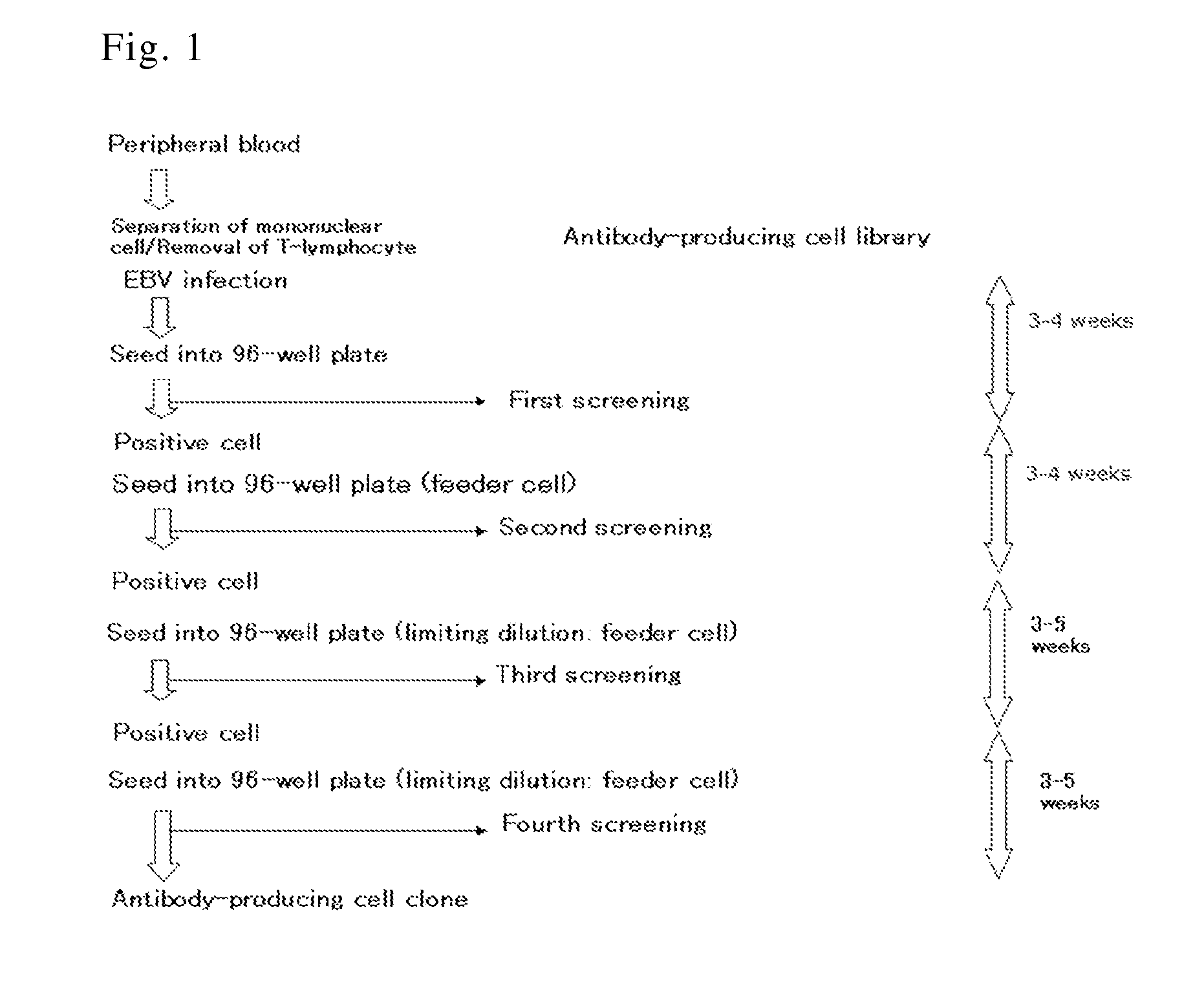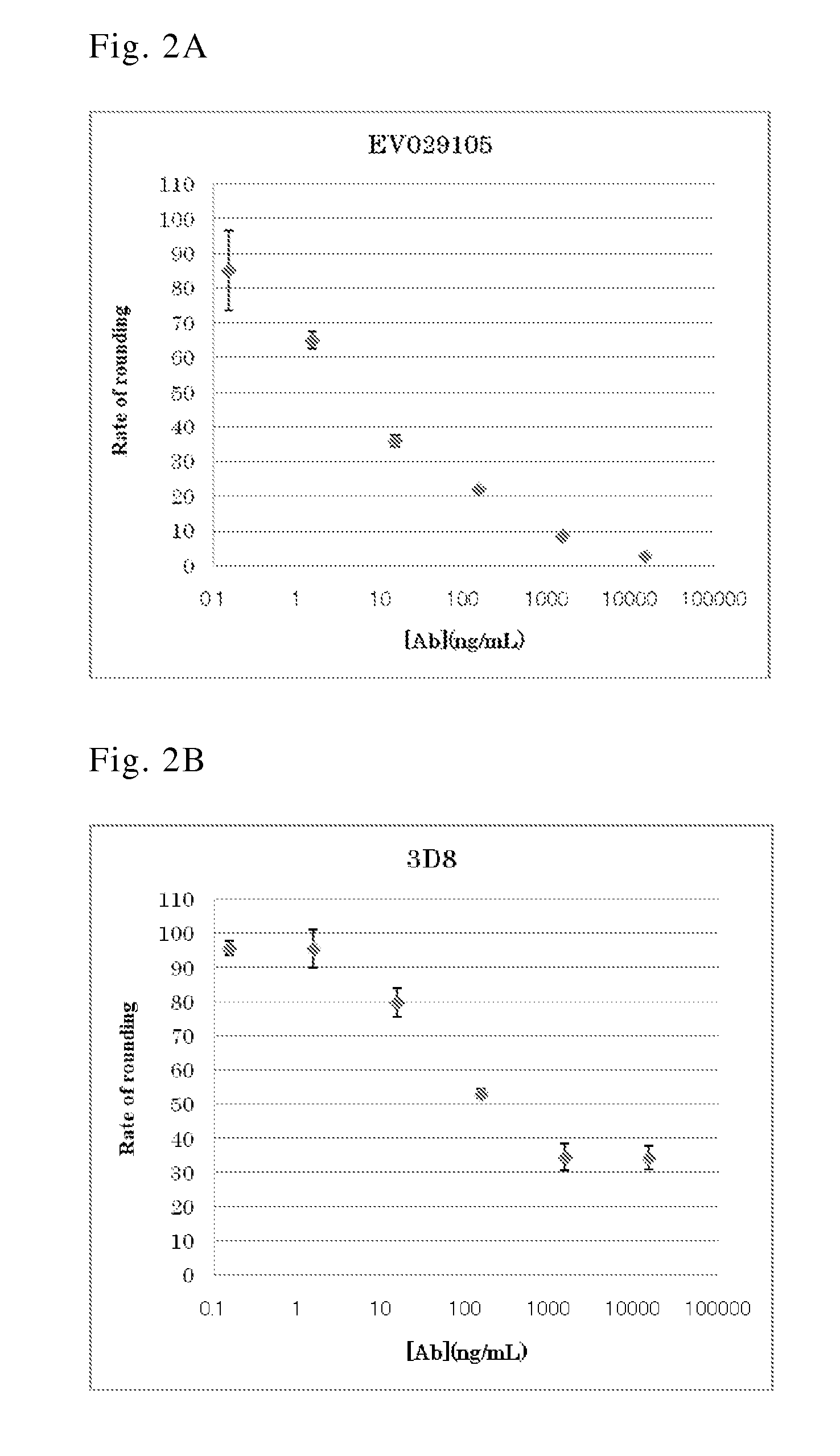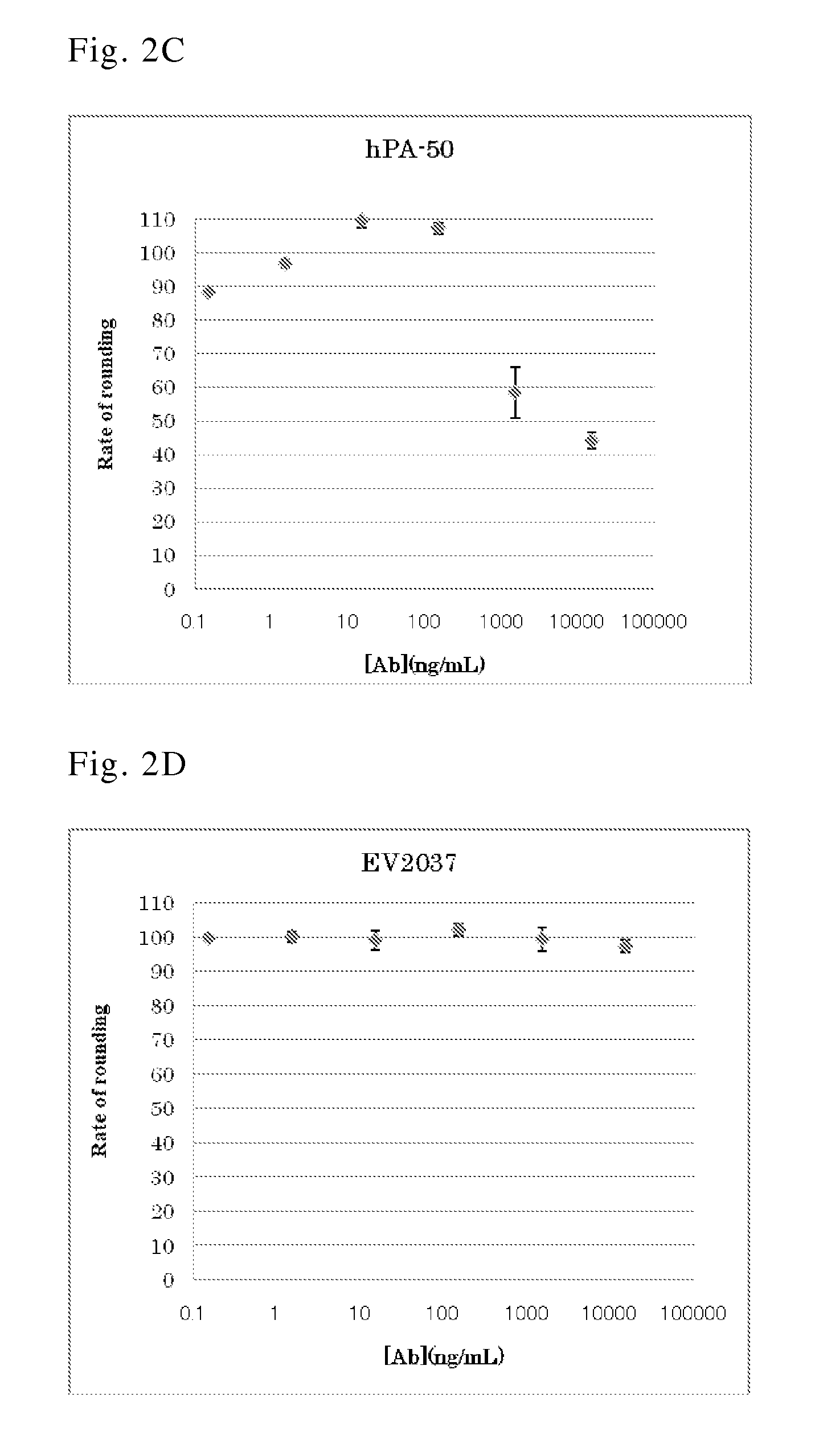Human antibody specific to toxin produced from clostridium difficile, or antigen-binding fragment thereof
a technology of clostridium difficile and human antibody, which is applied in the field of human monoclonal antibodies, can solve the problems of large number of deaths and still susceptible to improvement, and achieve the effect of low immunogenicity
- Summary
- Abstract
- Description
- Claims
- Application Information
AI Technical Summary
Benefits of technology
Problems solved by technology
Method used
Image
Examples
example 1
Separation of Cell Clone Producing Completely Human Antibody Against C. difficile Toxin a or Toxin B
[0127]A typical flowchart for the separation of an antibody-producing cell clone is shown in FIG. 1.
[0128]B lymphocytes were separated from anti-C. difficile toxin antibody-positive human peripheral blood and infected by EBV. The infected cells were inoculated to a 96-well plate, cultured for 3 to 4 weeks, and then screened for anti-C. difficile toxin antibodies in the culture supernatant. The screening was carried out by ELISA targeting antibodies against toxin A (SEQ ID NO: 25; GenBank Accession No. P16154) and toxin B (SEQ ID NO: 26; GenBank Accession No. Q46034) (Clin. Microbiol. Rev., 18, 247-263 (2005); and GlycoBiol., 17, 15-22 (2007)), which are primary exotoxins of C. difficile, and using a 96-well plate coated with toxin A or toxin B (both obtained from List Biological Laboratories Inc.). The cells in each well confirmed to contain the produced anti-C. difficile toxin antibo...
example 2
Confirmation of Antibody Isotype and Subclass
[0129]Each produced antibody was isotyped by ELISA using the culture supernatant of the separated antibody-producing cell clone (see reference: Curr Protoc Immunol. 2001 May; Chapter 2: Unit 2.2). This ELISA employed a 96-well plate coated with toxin A or toxin B to which each anti-toxin antibody was allowed to bind. Next, an antibody specific for each isotype and subclass was used as a secondary antibody. The isotype and subclass of the obtained anti-toxin A antibody or anti-toxin B antibody is shown in Table 1.
TABLE 1Antibody No.Target antigenSubclassEV029105aToxin AIgG1 / κEV029104Toxin BIgG1 / λ
example 3
Cloning of cDNA Encoding Anti-C. difficile Toxin Antibody
[0130]The total RNA of the antibody-producing cells was reverse-transcribed using oligo-dT primers. The obtained cDNA was used as a template in the PCR amplification of each antibody gene. The primers used in PCR were designed on the basis of the database of cDNAs encoding human IgG antibody H and L chains. In order to amplify the full-length H chain cDNA and L chain cDNA, the 5′ primer has a translation initiation point, and the 3′ primer has a translation termination point.
PUM
| Property | Measurement | Unit |
|---|---|---|
| Fraction | aaaaa | aaaaa |
| Dissociation constant | aaaaa | aaaaa |
Abstract
Description
Claims
Application Information
 Login to View More
Login to View More - R&D
- Intellectual Property
- Life Sciences
- Materials
- Tech Scout
- Unparalleled Data Quality
- Higher Quality Content
- 60% Fewer Hallucinations
Browse by: Latest US Patents, China's latest patents, Technical Efficacy Thesaurus, Application Domain, Technology Topic, Popular Technical Reports.
© 2025 PatSnap. All rights reserved.Legal|Privacy policy|Modern Slavery Act Transparency Statement|Sitemap|About US| Contact US: help@patsnap.com



